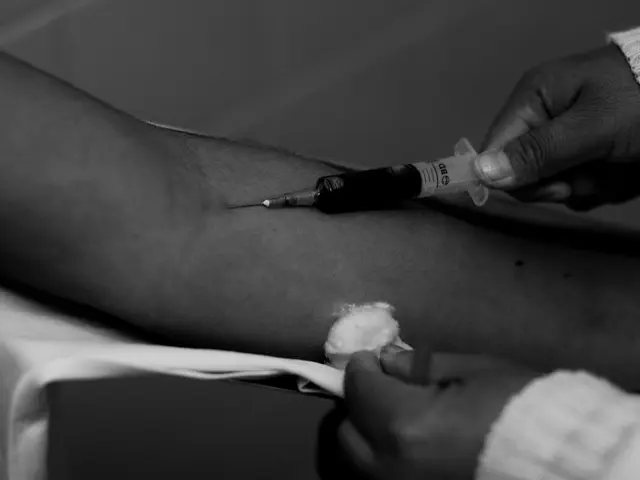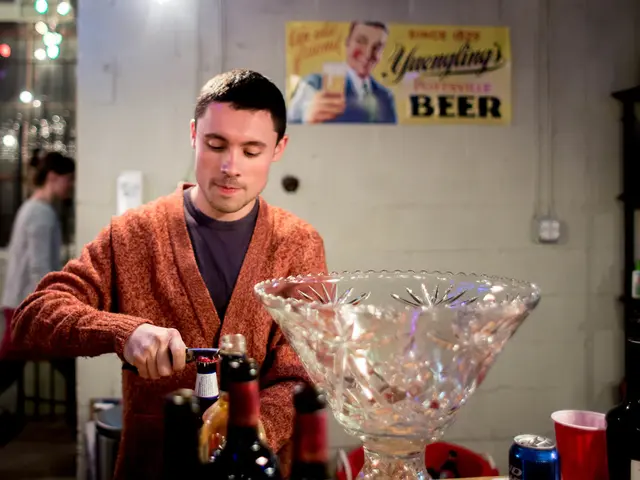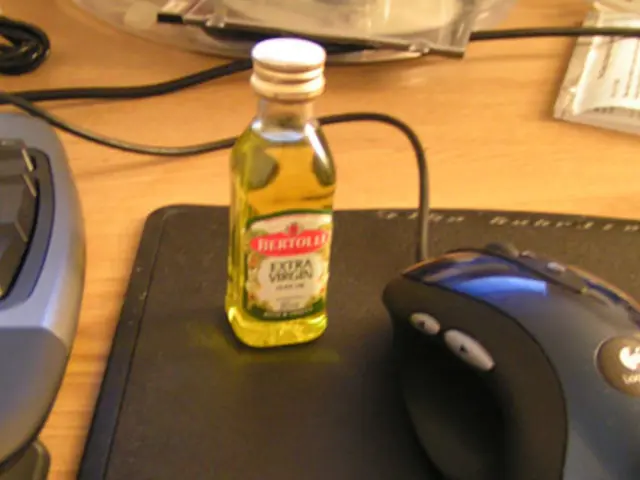Unveiling the Pathways of Mask Production and Distribution!
Stocking up on masks wasn't always common practice, but these days it seems everyone's got a stash. Blue, pink, camo - masks have become as diverse as our personality, but do they really protect us from the pesky virus?
The mask supply chain - it's a complex web that's spun tighter than a spider's web, but don't worry, let's unravel the secret threads, shall we?
Mask Variety Show
You've doubtless heard all about N95 masks amidst the virus craze. I didn't know a thing about them either, until everyone started freaking out about healthcare workers running low. Now, it seems like every Tom, Dick, and Harry is wearing masks – the more outrageous, the better! From elaborate designs to rocking slogans, the masks have transformed from being merely protective gear into a fashion statement. But are they really effective, or has style overshadowed function?
While these masks do cover your face, it's no secret that many people don't wear them correctly. To top it off, there have been instances of masks being imported and rejected since they didn't meet quality standards to ensure they could stop the virus in its tracks.
So, masks might be functional, but are they truly reliable in our fight against the virus?
To make things clear, medical guidelines don't require the general public to wear medical masks for everyday purposes. Fabric masks, the ones you see folks wearing every day, should be the norm. The World Health Organization has guidelines on how to make and wear masks, so don't worry - you've still got options!
Where Do We Source Our Masks?
Now that you're an expert on masks, let's turn our attention to where they come from. In the past, we'd leave mask-making to our moms, besties, or the occasional friendly neighbor. But like most things, the demand for masks exploded with more countries, states, and corporations adopting the mandatory mask policy.
With the sudden surge in demand for masks, manufacturers jumped on the bandwagon. Some companies started producing medical masks, while others switched up their production lines to pump out non-medical masks. And just like that, as varied as your Facebook profile, masks can now cater to practically any taste or preference.
You might be thinking that most medical masks are manufactured in the USA, but let's be real - that would be surprising. Most medical masks worldwide are made in China. This probably won't shock you, given China's vast manufacturing prowess.
But hey, during the pandemic, many countries realized that they didn't have domestic manufacturing for medical masks – oops! Imported masks from China were found to be defective, and the US government even put a halt on exporting Personal Protective Equipment (PPE) to Canada. This soon left those countries in a sticky situation, relying on other countries to resolve their predicament.
With China providing most of the medical masks, the situation became more challenging as reports surfaced that a significant chunk of that production were kept within China, despite efforts to boost production in response to the virus outbreak. Exports from China have increased, but it's still vital for countries to consider alternative sourcing options for these critical products due to this complex situation.
Canada managed to score a deal with 3M to manufacture medical masks in Ontario to alleviate their supply issues, which definitely makes sense considering the risks involved in relying on a single supplier.
This mask mess has shed light on the importance of using a "Parallel Supply Chain" strategy for critical items like medical masks. By securing multiple sources of supply, nations can ensure a resilient supply of these essential goods in the future.
Your Mask Pal
In these tumultuous times, it's incredible to see how much has changed. In the past, wearing a mask in public was almost non-existent in Western countries, but these days, it's pretty much mandatory. While we're hoping the pandemic will soon be a thing of the past, we expect more people will don masks when they're ill with a common cold or flu.
Recently, I found myself in an ice cream joint, and I noticed a sign on the door requiring everyone to wear masks. A lady entered behind me, maskless, and was quickly told by the store staff that she couldn't enter without a mask. She threw a hissy fit, but eventually stormed out empty-handed.
It's not about a loss of freedom or comfort – it's about keeping yourself and others healthy.
So, buckle up, mask marvels, and let's hope we can all make it through this pandemic together!
- The elaborate designs and rocking slogans on masks have turned them from protective gear into a fashion statement, raising questions about their effectiveness.
- Many people don't wear masks correctly, and there have been instances of rejected masks due to quality issues and safety concerns.
- Medical guidelines recommend fabric masks for everyday use, and the World Health Organization provides guidelines on how to make and wear masks.
- With the sudden surge in demand for masks, manufacturers around the world have started producing them, catering to various tastes and preferences.
- China is the world's largest manufacturer of medical masks, given its extensive manufacturing capabilities, but countries have realized the risks involved in relying on a single supplier.
- During the pandemic, some countries, like the US and Canada, have faced challenges with imported masks from China, as reported defective masks and export restrictions.
- To ensure a resilient supply of essential goods like medical masks, nations should implement a "Parallel Supply Chain" strategy by securing multiple sources of supply.
- The pandemic has made it apparent that more people will likely wear masks when ill with common colds or flu in the future.
- In challenging times, the importance of mask-wearing for maintaining personal and public health should take precedence over concerns about freedom or comfort.







